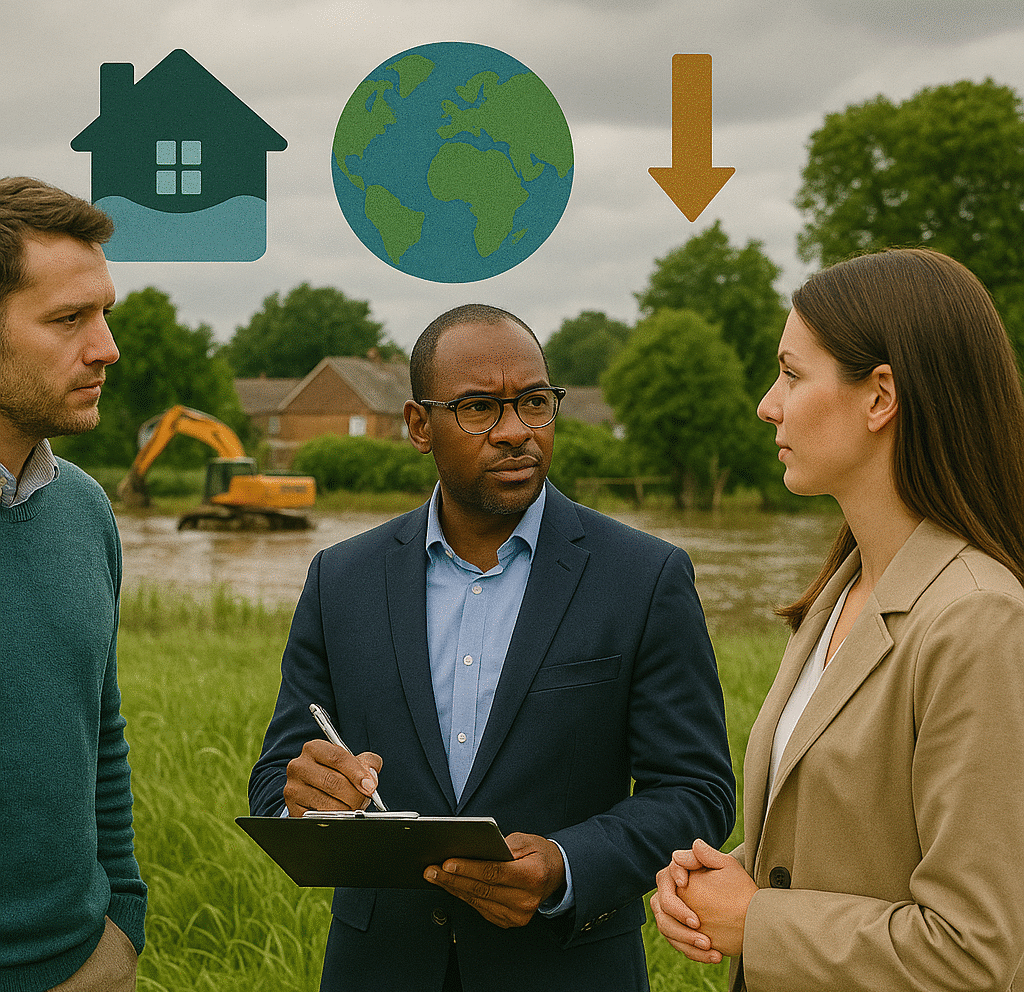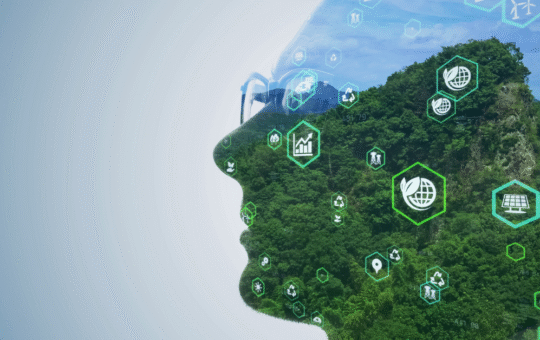Expert

Level 4 Diploma in Climate Change Adaptation and Mitigation
Level 4 Diploma in Climate Change Adaptation and MitigationCourse OverviewThe Level 4 Diploma in Climate Change Adaptation and Mitigation is a specialized course designed to equip learners with the knowledge and skills required to address climate change challenges. The diploma focuses on understanding the science of climate change, its impacts on different sectors, and the strategies for adaptation and mitigation. Learners will develop the ability to create and implement effective climate change strategies for businesses, communities, and governments. This course is ideal for individuals seeking to make a tangible impact on climate action and environmental sustainability.Benefits
Who is This Designed For?This diploma is ideal for:
- Gain comprehensive knowledge of climate change science, its causes, and its global impacts.
- Learn to design and implement climate adaptation and mitigation strategies.
- Understand how to integrate climate change into policy development and decision-making processes.
- Develop practical skills for assessing and managing climate risks.
- Contribute to the development of sustainable practices to combat climate change.
- Enhance career opportunities in environmental consultancy, sustainability, and climate change policy.
- Understand the science behind climate change, including its causes and effects.
- Identify the risks and vulnerabilities associated with climate change for different sectors.
- Develop strategies to mitigate greenhouse gas emissions and limit global warming.
- Implement climate adaptation measures to address the impacts of climate change on ecosystems and human communities.
- Analyze and apply international climate agreements, policies, and frameworks.
- Utilize tools and techniques for climate risk assessment and vulnerability analysis.
- Engage stakeholders and communicate the importance of climate action to diverse audiences.
- Monitor and evaluate the effectiveness of climate change initiatives and policies.
- Introduction to Climate Change Science and Impacts
- Understanding the scientific basis of climate change: greenhouse gases, global warming, and climate models.
- Overview of climate change impacts on ecosystems, agriculture, human health, and infrastructure.
- The role of natural and human activities in driving climate change.
- Climate variability, trends, and projections: local, regional, and global scales.
- Key concepts in climate change mitigation and adaptation.
- The difference between adaptation and mitigation strategies and why both are necessary.
- Climate Change Mitigation Strategies
- Understanding climate change mitigation: reducing or preventing the emission of greenhouse gases.
- Low-carbon technologies: renewable energy, energy efficiency, and carbon capture and storage.
- Carbon markets, trading, and pricing mechanisms: tools to incentivize emission reductions.
- Developing carbon management strategies for businesses and organizations.
- Mitigation policies at the international, national, and local levels.
- The role of forests, land use, and agriculture in climate change mitigation.
- Climate Change Adaptation Strategies
- Understanding climate change adaptation: strategies to cope with and adjust to the impacts of climate change.
- Assessing vulnerabilities and risks to ecosystems, infrastructure, and communities.
- Developing climate resilience strategies for communities, cities, and industries.
- Climate adaptation in sectors such as agriculture, water resources, and urban planning.
- Ecosystem-based adaptation: leveraging natural solutions to build resilience.
- The role of infrastructure and green technologies in promoting adaptation.
- International Climate Change Frameworks and Policies
- Overview of international climate change agreements: UNFCCC, Paris Agreement, and Kyoto Protocol.
- National and regional climate change policies and strategies.
- Understanding carbon markets, emission reduction targets, and international cooperation.
- The role of the private sector and civil society in implementing climate policies.
- Funding and financing mechanisms for climate change mitigation and adaptation (e.g., Green Climate Fund).
- The role of governments in driving climate action through regulation, incentives, and public-private partnerships.
- Climate Risk Assessment and Vulnerability Analysis
- Introduction to climate risk assessment and vulnerability analysis tools.
- Identifying climate hazards and analyzing their potential impacts on people, assets, and infrastructure.
- Mapping and assessing climate vulnerabilities at the local, regional, and global levels.
- Using data and models to forecast climate risks and impacts.
- Conducting vulnerability assessments for sectors like agriculture, health, and urban development.
- Identifying climate adaptation priorities based on risk assessments.
- Sustainable Development and Climate Change
- Integrating climate change adaptation and mitigation into sustainable development goals (SDGs).
- How to align national, regional, and local policies with climate action and sustainable development.
- The role of business and industry in contributing to sustainable development and climate solutions.
- Circular economy and its relationship with climate change: reducing waste, enhancing resource efficiency.
- Promoting green growth and sustainable consumption patterns.
- Case studies of successful climate-related sustainable development projects.
- Engagement and Communication in Climate Action
- The importance of stakeholder engagement in climate change initiatives.
- Techniques for involving communities, businesses, and governments in climate action.
- Communicating climate risks and adaptation strategies to diverse audiences.
- Building public awareness about climate change and encouraging behavioral change.
- The role of education, media, and advocacy in advancing climate policies.
- Developing and delivering effective climate communication strategies.
- Monitoring, Reporting, and Evaluation of Climate Initiatives
- The importance of monitoring and evaluating climate change programs and policies.
- Key performance indicators (KPIs) for tracking the success of climate adaptation and mitigation projects.
- Using data to assess the effectiveness of mitigation strategies in reducing emissions.
- Evaluating the success of adaptation projects in building resilience.
- Reporting and accountability frameworks: ensuring transparency in climate action efforts.
- Tools for assessing the impact of climate initiatives on communities, ecosystems, and industries.
| Unit Title | GLH | TQT | Credit | Assessment Type |
| Introduction to Climate Change Science and Impacts | 20 | 40 | 4 | Assignment-Based |
| Climate Change Mitigation Strategies | 20 | 40 | 4 | Assignment-Based |
| Climate Change Adaptation Strategies | 20 | 40 | 4 | Assignment-Based |
| International Climate Change Frameworks and Policies | 20 | 40 | 4 | Assignment-Based |
| Climate Risk Assessment and Vulnerability Analysis | 20 | 40 | 4 | Assignment-Based |
| Sustainable Development and Climate Change | 20 | 40 | 4 | Assignment-Based |
| Engagement and Communication in Climate Action | 20 | 40 | 4 | Assignment-Based |
| Monitoring, Reporting, and Evaluation of Climate Initiatives | 20 | 40 | 4 | Assignment-Based |
- Environmental professionals seeking to specialize in climate change and sustainability.
- Policy makers, government officials, and consultants involved in climate change and environmental planning.
- Project managers and directors working in organizations with a focus on climate change adaptation or mitigation.
- Sustainability officers, environmental engineers, and researchers working on climate action projects.
- Individuals aiming to pursue careers in climate change policy, environmental management, or sustainable development.
- Take on roles such as Climate Change Consultant, Environmental Policy Analyst, or Sustainability Manager.
- Work with governments, NGOs, environmental agencies, and international organizations focusing on climate action.
- Move into senior roles such as Climate Adaptation Program Manager, Environmental Director, or Renewable Energy Strategist.
- Contribute to international climate change efforts and negotiations at the policy level.
- Further studies in climate change science, environmental law, or sustainable development.
- Expert-Led Learning: Learn from experienced professionals and climate scientists who bring real-world expertise to the course.
- Practical Knowledge: Gain hands-on experience with tools, strategies, and frameworks for climate change adaptation and mitigation.
- Globally Recognized Qualification: The diploma is internationally recognized and respected, improving your career prospects globally.
- Actionable Insights: The course provides practical knowledge that can be applied immediately to real-world climate change issues and projects.
- Comprehensive Coverage: From scientific theory to policy implementation, this diploma covers all aspects of climate change adaptation and mitigation.
Qualification Title: Level 4 Diploma in Climate Change Adaptation and Mitigation
Level: 4
Type: Diploma
Total Qualification Time (TQT): 320 hours
Guided Learning Hours (GLH): 160 hours
Credit Value: 32 credits
Assessment Method: Assignment-Based
Grading: Pass/Fail
Delivery Mode: Online / In-Person / Blended
Study Units Breakdown
| Unit Title | GLH | TQT | Credit | Assessment Type |
| Introduction to Climate Change Science and Impacts | 20 | 40 | 4 | Assignment-Based |
| Climate Change Mitigation Strategies | 20 | 40 | 4 | Assignment-Based |
| Climate Change Adaptation Strategies | 20 | 40 | 4 | Assignment-Based |
| International Climate Change Frameworks and Policies | 20 | 40 | 4 | Assignment-Based |
| Climate Risk Assessment and Vulnerability Analysis | 20 | 40 | 4 | Assignment-Based |
| Sustainable Development and Climate Change | 20 | 40 | 4 | Assignment-Based |
| Engagement and Communication in Climate Action | 20 | 40 | 4 | Assignment-Based |
| Monitoring, Reporting, and Evaluation of Climate Initiatives | 20 | 40 | 4 | Assignment-Based |
Upon completing this diploma, learners will be able to:
- Understand the science behind climate change, including its causes and effects.
- Identify the risks and vulnerabilities associated with climate change for different sectors.
- Develop strategies to mitigate greenhouse gas emissions and limit global warming.
- Implement climate adaptation measures to address the impacts of climate change on ecosystems and human communities.
- Analyze and apply international climate agreements, policies, and frameworks.
- Utilize tools and techniques for climate risk assessment and vulnerability analysis.
- Engage stakeholders and communicate the importance of climate action to diverse audiences.
- Monitor and evaluate the effectiveness of climate change initiatives and policies.
This diploma is ideal for:
- Environmental professionals seeking to specialize in climate change and sustainability.
- Policy makers, government officials, and consultants involved in climate change and environmental planning.
- Project managers and directors working in organizations with a focus on climate change adaptation or mitigation.
- Sustainability officers, environmental engineers, and researchers working on climate action projects.
- Individuals aiming to pursue careers in climate change policy, environmental management, or sustainable development.
Assessment Type: Assignments Based
Top Courses
Related Courses
Let's Get in touch
Deleting Course Review
Are you sure? You can't restore this back
Course Access
This course is password protected. To access it please enter your password below:



